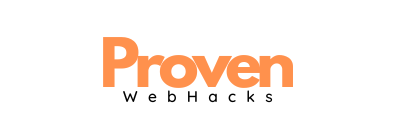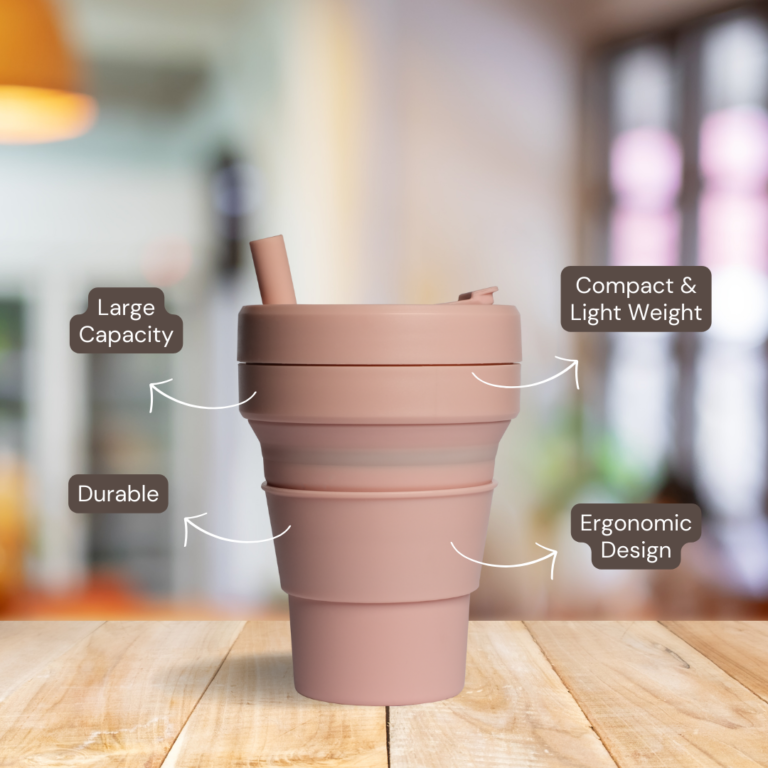Amazon ACoS Calculation: How to Enhance Campaign Performance
What should you do if you have no idea where you’re going? Google Maps is launched.
For Amazon Ads, ACoS is similar to Google Maps. It informs you if your marketing plan is on target and evolving to meet your company’s objectives.
But how can you figure out ACoS for your company? What factors influence it, too?
This blog provides a brief introduction of Amazon ACoS, explains methods to determine it, and discusses methods for lowering ACoS in order to increase earnings.
Let’s get started!
How to Calculate Amazon ACoS and What It Is.
Let’s first discuss tactics after understanding what Amazon ACoS is.
The effectiveness of your marketing strategy is measured by Amazon ACoS aka Advertisement Cost of Sale.
It is the ratio in percentage between the total amount of money spent on advertising and the total amount of money made from such advertisements.
Here is the equation:
ACoS equals (Ad Spend/Ad Revenue) x 100%ACoS, in essence, reveals the amount of money used for marketing for each dollar that was made from the promotion.
Your ACoS, for instance, would be 50% if $100 was spent on advertising and $200 was made in revenue. This implies that for every $1 you spend on advertising, you make $2 in sales.
Maintaining a low ACoS, which shows that your advertising costs are lower than the income produced, is something we always recommend.
The perfect ACoS for your company, however, relies on a number of variables, including:
First, consider your product.
Your product itself is the first thing that has an impact on your ACoS.
Your product’s pricing, demand, quality, and level of competition will all affect whether or not it sells as well as how much money you must invest in marketing to draw in consumers.
For instance, when the item you sell is exceptional, well-made, and in great demand, you may attain an acceptable ACoS as clients will be ready to shell out higher rates and purchase through you with no prodding.
However, whether your good is universal, subpar, or in a crowded industry, you may need to spend more money on advertising to set yourself beyond the competition and persuade them to purchase from you.
Second, consider your keywords.
Your keywords are the second element that has an impact on your ACoS. For your advertising efforts to be successful and have a low ACoS, selecting the proper keywords is essential.
For instance, you could wish to utilize keywords like “dog toys,” “dog chew toys,” “dog squeaky toys,” etc. if you offer dog toys.
These keywords have a lot of searches and are pertinent to your goods.
For certain keywords, there can be a lot of competition and expensive bids. A high ACoS is the effect of this.
In contrast, long-tail keywords, such as “dog toys for aggressive chewers,” “dog toys for large dogs,” “dog toys made in the USA,” etc., are more precise and have smaller search volumes, which means there is less competition and cheaper bids.
Because you spend less for each click, this may lead to a low ACoS.
Thirdly, your offers
Your bids are the third element that has an influence on your ACoS.
Optimizing the advertising expenditure and increasing the return on investment (ROI) depends on having the appropriate bidding strategy.
For instance, if you place a bid that is excessively high on a campaign that performs poorly, you may see a relative increase in traffic and revenue, however, the return on investment becomes low, raising the ACoS.
On the other side, a high-performing campaign will generate comparatively more sales even if you don’t bid well, which will lower the ACoS.
Both situations, though, have the potential to be superior since they restrict your ability to improve. The best bidding strategy achieves a balance of clicks, sales, ad expenditure, and profit margin. As a consequence, your ROI will be maximized by an ideal ACoS.
Now that ROAS has to be brought up in order to examine ACoS, let’s look at how they are connected:
What exactly is a ROAS?
Return on Advertising Spend, or ROAS, calculates how much money you gain from sales for every dollar you spend on Amazon advertising. It aids in your analysis of the efficiency and financial success of your advertising initiatives.
It is the proportion of total advertising-attributed sales to total advertising cost. Your ROAS, for instance, would be 5 if you invested $100 in advertisements and received $500 in sales as a result.
Typically, a more successful marketing campaign correlates with a greater ROAS.
Here is the equation:
ROAS is equal to (Sales / Revenue) multiplied by 100%.
What Differs Between ACoS and ROAS?
Actually, not much! They’re essentially the same thing.
By examining the correlation between ad expenditure and ad income, ROAS and ACoS assess the efficiency and profitability of advertising.
Consider that you conduct an Amazon advertising campaign, spend $200 on advertising, and earn $1,000 in ad income.
To determine ACoS, divide your advertising expense by your advertising revenue:
ACoS = $200 divided by $1,000 equals 0.20, or 20%
In other words, your advertising costs were 20 cents for every $1 in ad income.
The formula for calculating ROAS is as follows, using a similar scenario of $200 in advertising expenses and $1,000 in advertising revenue:
ROAS = $1,000 divided by $200 equals 5.0
Accordingly, your income would be $5 for every $1 you spend on advertising.
You may evaluate your Amazon advertising campaigns’ effectiveness and financial success using these measures. While ROAS stresses the return aspect, ACoS concentrates on the cost component.
Depending on your tastes, you can go with one or the other, or perhaps both.
Let’s now discuss how to utilize these indicators to your advantage when developing an Amazon advertising campaign.
How to Determine the ACoS Break-Even Point?
Your advertising expenses must match your profit margin at the break-even ACoS.
It is, in other words, the highest ACoS that you can pay for without having to cut back on your advertising spending.
Just subtract the profit that you make by the price of your goods, multiply by 100, and that number will be your break-even ACoS.
Consider a scenario in which you offer a good for $200, with total expenses of $150 per unit for production, shipping, and Amazon fees.
In such case, ($200-$150)/$200*100=25% is your profit margin.
Your profit margin, in this example 25%, determines the product’s break-even ACoS.
Your Amazon marketing campaigns are successful while your cost of sales is below 25%.
How Do You Find Your Goal ACoS?
Target ACoS goes above and beyond break-even ACoS in making sure you aren’t losing money.
Your desired ACoS is reached when, after deducting advertising expenses, you are not only breaking even but also generating a particular profit margin.
Profit Margin Prior to Advertising – Target Profit Margin Post-Advertising = Target ACoS
Whether you want to optimize profitability or growth will determine whether it is lower or greater than your break-even ACoS.
You could be prepared to tolerate a higher ACoS, for instance, if you are introducing something new or approaching a new market in order to increase attention and share of the market. On the other side, you should maintain your goal ACoS lower when you’ve got a well-known item or an edge over others to boost your margins of profit as well as ROAS.
Let’s stick with the product example for now. Your goal ACoS would be determined using the formula below if you wanted to retain an income margin of 10% post-marketing.
Goal ACoS: 25% – 10% = 15%
Therefore, 15% would be your desired ACoS in this scenario. This suggests that you need just 15% of your sales on advertising if your goal is to maintain a margin of net profit of 10%.
There isn’t a universal method for calculating the desired ACoS, but using the break-even point ACoS as a guide and modifying it in accordance with your objectives and circumstances is a good place to start.
What Makes an Effective ACoS for Your Company?
An ACoS that is flawless does not exist. The profit margin of the company, the sector, and other particular elements all have a role.
An ACoS of less than one is, nevertheless, generally seen as advantageous. However, depending on your company’s purpose, it could alter.
For instance,
Goal #1: Increase Brand Awareness
Your main objective when starting a firm is to increase brand recognition. You would want to generate as many brand impressions at this time as you can without going bankrupt.
In order to maximize impressions without suffering a loss, maintain the Marketing Cost of Sales (ACoS) around break-even throughout this phase.
Goal #2: Introduction of the product
Your main goals when introducing a new product should be to boost sales velocity, gather more reviews, and move the product up the Amazon SERP.
In this situation, it is possible to go over the break-even ACoS in order to get initial momentum for your product. Even if you lose money, your first sales and traction will increase your return on investment over time.
Goal #3: Make money through advertising
If you want to increase your profit margin, determine your desired ACoS and strive toward it.
The money you produce from Amazon PPC is the sole revenue that Amazon ACoS takes into account, it’s vital to remember this. If you want to comprehend the actual profitability of your firm, it might not be the best statistic to follow.
Total ACoS enters the scene in that situation.
What does “Total Advertising Cost of Sales” (TACoS) mean?
TACoS uses a more comprehensive approach and displays the link between advertising spending and overall earnings (organic + ad-attributed sales), whereas ACoS evaluates the relationship between ad expenditure and ad income.
TACOS is calculated by multiplying the total amount spent on advertising by 100.
The most typical use cases for TACoS are:
Analyze the profitability of the business following advertising.
Keep track of your business’s Total Advertisement Cost of Selling (TACoS) to determine its overall profitability.
For instance, if you spent $1,000 on advertising each month and made $10,000 in sales overall ($7,000 from organic sources and $3,000 from ads),
thus, despite the fact that your ACoS is larger than average ($1000/$3000)*100 = 33%,
overall strong profitability for your company is shown by the total ACoS of ($1000/$10000)*100 = 10%.
Review Successful Products
Products that primarily rely on Amazon may be easily identified if you monitor the TACoS of every item in the portfolio you have.
A strong dependence on advertisements, for instance, may be indicated by a small number of items with a high TACoS.
To improve the CTR as well as rate of conversion, rework the item’s listing, optimize it with keywords, and gather more reviews. This will boost the product’s ad and organic sales.
As opposed to other items, a low TACoS indicates less advertising spending and more organic sales. If so, you can raise your advertising budget to enhance ad sales and boost profitability.
Do you wish to know more about complete ACoS? Read the whole TACoS manual.
Four Modern Methods to Reduce Your Amazon ACoS
The secret to succeeding with Amazon PPC is to have your ACoS below break-even. Here are a few methods for doing this.
Set Your Best ASINs in Priority
Your portfolio’s items aren’t all equally profitable. So, quickly check your product catalog to identify the best-selling items with the highest CTR and CVR.
Spend more of your advertising budget on these goods that perform well and less on those that don’
How to Calculate Amazon ACoS and Enhance Campaign Performance
What should you do if you have no idea where you’re going? Google Maps is launched.
For Amazon Ads, ACoS is similar to Google Maps. It informs you if your marketing plan is on target and evolving to meet your company’s objectives.
But how can you figure out ACoS for your company? What factors influence it, too?
This blog provides a brief introduction of Amazon ACoS, explains methods to determine it, and discusses methods for lowering ACoS in order to increase earnings.
Let’s get started!
How to Calculate Amazon ACoS and What It Is.
Let’s first discuss tactics after understanding what Amazon ACoS is.
The effectiveness of your marketing strategy is measured by Amazon ACoS aka Advertisement Cost of Sale.
It is the ratio in percentage between the total amount of money spent on advertising and the total amount of money made from such advertisements.
Here is the equation:
ACoS equals (Ad Spend/Ad Revenue) x 100%
ACoS, in essence, reveals the amount of money used for marketing for each dollar that was made from the promotion.
Your ACoS, for instance, would be 50% if $100 was spent on advertising and $200 was made in revenue. This implies that for every $1 you spend on advertising, you make $2 in sales.
Maintaining a low ACoS, which shows that your advertising costs are lower than the income produced, is something we always recommend.
The perfect ACoS for your company, however, relies on a number of variables, including:
First, consider your product.
Your product itself is the first thing that has an impact on your ACoS.
Your product’s pricing, demand, quality, and level of competition will all affect whether or not it sells as well as how much money you must invest in marketing to draw in consumers.
For instance, when the item you sell is exceptional, well-made, and in great demand, you may attain an acceptable ACoS as clients will be ready to shell out higher rates and purchase through you with no prodding.
However, whether your good is universal, subpar, or in a crowded industry, you may need to spend more money on advertising to set yourself beyond the competition and persuade them to purchase from you.
Second, consider your keywords.
Your keywords are the second element that has an impact on your ACoS. For your advertising efforts to be successful and have a low ACoS, selecting the proper keywords is essential.
For instance, you could wish to utilize keywords like “dog toys,” “dog chew toys,” “dog squeaky toys,” etc. if you offer dog toys.
These keywords have a lot of searches and are pertinent to your goods.
For certain keywords, there can be a lot of competition and expensive bids. A high ACoS is the effect of this.
In contrast, long-tail keywords, such as “dog toys for aggressive chewers,” “dog toys for large dogs,” “dog toys made in the USA,” etc., are more precise and have smaller search volumes, which means there is less competition and cheaper bids.
Because you spend less for each click, this may lead to a low ACoS.
Thirdly, your offers
Your bids are the third element that has an influence on your ACoS.
Optimizing the advertising expenditure and increasing the return on investment (ROI) depends on having the appropriate bidding strategy.
For instance, if you place a bid that is excessively high on a campaign that performs poorly, you may see a relative increase in traffic and revenue, however, the return on investment becomes low, raising the ACoS.
On the other side, a high-performing campaign will generate comparatively more sales even if you don’t bid well, which will lower the ACoS.
Both situations, though, have the potential to be superior since they restrict your ability to improve. The best bidding strategy achieves a balance of clicks, sales, ad expenditure, and profit margin. As a consequence, your ROI will be maximized by an ideal ACoS.
Now that ROAS has to be brought up in order to examine ACoS, let’s look at how they are connected:
What exactly is a ROAS?
Return on Advertising Spend, or ROAS, calculates how much money you gain from sales for every dollar you spend on Amazon advertising. It aids in your analysis of the efficiency and financial success of your advertising initiatives.
It is the proportion of total advertising-attributed sales to total advertising cost. Your ROAS, for instance, would be 5 if you invested $100 in advertisements and received $500 in sales as a result.
Typically, a more successful marketing campaign correlates with a greater ROAS.
Here is the equation:
ROAS is equal to (Sales / Revenue) multiplied by 100%.
What Differs Between ACoS and ROAS?
Actually, not much! They’re essentially the same thing.
By examining the correlation between ad expenditure and ad income, ROAS and ACoS assess the efficiency and profitability of advertising.
Consider that you conduct an Amazon advertising campaign, spend $200 on advertising, and earn $1,000 in ad income.
To determine ACoS, divide your advertising expense by your advertising revenue:
ACoS = $200 divided by $1,000 equals 0.20, or 20%
In other words, your advertising costs were 20 cents for every $1 in ad income.
The formula for calculating ROAS is as follows, using a similar scenario of $200 in advertising expenses and $1,000 in advertising revenue:
ROAS = $1,000 divided by $200 equals 5.0
Accordingly, your income would be $5 for every $1 you spend on advertising.
You may evaluate your Amazon advertising campaigns’ effectiveness and financial success using these measures. While ROAS stresses the return aspect, ACoS concentrates on the cost component.
Depending on your tastes, you can go with one or the other, or perhaps both.
Let’s now discuss how to utilize these indicators to your advantage when developing an Amazon advertising campaign.
How to Determine the ACoS Break-Even Point?
Your advertising expenses must match your profit margin at the break-even ACoS.
It is, in other words, the highest ACoS that you can pay for without having to cut back on your advertising spending.
Just subtract the profit that you make by the price of your goods, multiply by 100, and that number will be your break-even ACoS.
Consider a scenario in which you offer a good for $200, with total expenses of $150 per unit for production, shipping, and Amazon fees.
In such case, ($200-$150)/$200*100=25% is your profit margin.
Your profit margin, in this example 25%, determines the product’s break-even ACoS.
Your Amazon marketing campaigns are successful while your cost of sales is below 25%.
How Do You Find Your Goal ACoS?
Target ACoS goes above and beyond break-even ACoS in making sure you aren’t losing money.
Your desired ACoS is reached when, after deducting advertising expenses, you are not only breaking even but also generating a particular profit margin.
Profit Margin Prior to Advertising – Target Profit Margin Post-Advertising = Target ACoS
Whether you want to optimize profitability or growth will determine whether it is lower or greater than your break-even ACoS.
You could be prepared to tolerate a higher ACoS, for instance, if you are introducing something new or approaching a new market in order to increase attention and share of the market. On the other side, you should maintain your goal ACoS lower when you’ve got a well-known item or an edge over others to boost your margins of profit as well as ROAS.
Let’s stick with the product example for now. Your goal ACoS would be determined using the formula below if you wanted to retain an income margin of 10% post-marketing.
Goal ACoS: 25% – 10% = 15%
Therefore, 15% would be your desired ACoS in this scenario. This suggests that you need just 15% of your sales on advertising if your goal is to maintain a margin of net profit of 10%.
There isn’t a universal method for calculating the desired ACoS, but using the break-even point ACoS as a guide and modifying it in accordance with your objectives and circumstances is a good place to start.
What Makes an Effective ACoS for Your Company?
An ACoS that is flawless does not exist. The profit margin of the company, the sector, and other particular elements all have a role.
An ACoS of less than one is, nevertheless, generally seen as advantageous. However, depending on your company’s purpose, it could alter.
For instance,
Goal #1: Increase Brand Awareness
Your main objective when starting a firm is to increase brand recognition. You would want to generate as many brand impressions at this time as you can without going bankrupt.
In order to maximize impressions without suffering a loss, maintain the Marketing Cost of Sales (ACoS) around break-even throughout this phase.
Goal #2: Introduction of the product
Your main goals when introducing a new product should be to boost sales velocity, gather more reviews, and move the product up the Amazon SERP.
In this situation, it is possible to go over the break-even ACoS in order to get initial momentum for your product. Even if you lose money, your first sales and traction will increase your return on investment over time.
Goal #3: Make money through advertising
If you want to increase your profit margin, determine your desired ACoS and strive toward it.
The money you produce from Amazon PPC is the sole revenue that Amazon ACoS takes into account, it’s vital to remember this. If you want to comprehend the actual profitability of your firm, it might not be the best statistic to follow.
Total ACoS enters the scene in that situation.
What does “Total Advertising Cost of Sales” (TACoS) mean?
TACoS uses a more comprehensive approach and displays the link between advertising spending and overall earnings (organic + ad-attributed sales), whereas ACoS evaluates the relationship between ad expenditure and ad income.
TACOS is calculated by multiplying the total amount spent on advertising by 100.
The most typical use cases for TACoS are:
Analyze the profitability of the business following advertising.
Keep track of your business’s Total Advertisement Cost of Selling (TACoS) to determine its overall profitability.
For instance, if you spent $1,000 on advertising each month and made $10,000 in sales overall ($7,000 from organic sources and $3,000 from ads),
thus, despite the fact that your ACoS is larger than average ($1000/$3000)*100 = 33%,
overall strong profitability for your company is shown by the total ACoS of ($1000/$10000)*100 = 10%.
Review Successful Products
Products that primarily rely on Amazon may be easily identified if you monitor the TACoS of every item in the portfolio you have.
A strong dependence on advertisements, for instance, may be indicated by a small number of items with a high TACoS.
To improve the CTR as well as rate of conversion, rework the item’s listing, optimize it with keywords, and gather more reviews. This will boost the product’s ad and organic sales.
As opposed to other items, a low TACoS indicates less advertising spending and more organic sales. If so, you can raise your advertising budget to enhance ad sales and boost profitability.
Do you wish to know more about complete ACoS? Read the whole TACoS manual.
Four Modern Methods to Reduce Your Amazon ACoS
The secret to succeeding with Amazon PPC is to have your ACoS below break-even. Here are a few methods for doing this.
Set Your Best ASINs in Priority
Your portfolio’s items aren’t all equally profitable. So, quickly check your product catalog to identify the best-selling items with the highest CTR and CVR.
Spend more of your advertising budget on these goods that perform well and less on those that don’t.
The Gathering Of Keywords From Auto Campaigns
Using automated campaigns, you may find fresh keywords that are pertinent to your offerings. Based on the details of your products and their categories, Amazon intelligently correlates your advertising to fresh and original search phrases.
Employ the Search Engine Term Analysis to identify the keyword in your automated ads to increase clicks and sales. Launch automated advertisements for at least two weeks.
To improve control and lower your ACoS, add these search terms to your manual campaign.
Additionally, analyze your manual efforts and look for wide correspond to and phrase-matched campaigns that have high-converting keywords. To optimize reach and boost conversions, change these keywords’ targeting to exact match.
Reduce Ad Budget Waste by Using Negative Keyword Targeting
Look for search phrases with poor CTR or sales in your current automatic and manual campaigns.
A search keyword is effectively draining your money if it generates a lot of traffic but no sales. To save money and lower ACoS, add these search terms to your list of negative keywords.
Additionally, look for repeated search phrases using other targeting strategies including phrase, wide, and exact match. Stick with the targeted strategy that has the best conversion rates. For improved outcomes, get rid of the others.
It also reduces ad costs and increases the effectiveness of your campaigns.
Establish Unique Budgets For Unique Conversion Windows
To determine the times and days of the week when your items are most likely to be purchased, use Amazon Marketing Stream.
To increase sales and reduce your ACoS, switch your advertising expenditure from low-converting periods to high-converting time frames.
This is only a superficial exploration. Read the entire guide to learn more ideas for optimizing your PPC and lowering ACoS.
Conclusion
The performance of your advertising initiatives may ultimately be determined by using Amazon ACoS as a key statistic. However, it must always be viewed from the perspective of your company’s objective.
A significant ACoS is unavoidable if you desire the quick growth of your company. Instead of focusing simply on decreasing your Amazon ACoS, emphasize overall ACoS if you want to boost your company’s profitability.
Find out how we can help you grow your business by setting up a call with us!
The Gathering Of Keywords From Auto Campaigns
Using automated campaigns, you may find fresh keywords that are pertinent to your offerings. Based on the details of your products and their categories, Amazon intelligently correlates your advertising to fresh and original search phrases.
Employ the Search Engine Term Analysis to identify the keyword in your automated ads to increase clicks and sales. Launch automated advertisements for at least two weeks.
To improve control and lower your ACoS, add these search terms to your manual campaign.
Additionally, analyze your manual efforts and look for wide correspond to and phrase-matched campaigns that have high-converting keywords. To optimize reach and boost conversions, change these keywords’ targeting to exact match.
Reduce Ad Budget Waste by Using Negative Keyword Targeting
Look for search phrases with poor CTR or sales in your current automatic and manual campaigns.
A search keyword is effectively draining your money if it generates a lot of traffic but no sales. To save money and lower ACoS, add these search terms to your list of negative keywords.
Additionally, look for repeated search phrases using other targeting strategies including phrase, wide, and exact match. Stick with the targeted strategy that has the best conversion rates. For improved outcomes, get rid of the others.
It also reduces ad costs and increases the effectiveness of your campaigns.
Establish Unique Budgets For Unique Conversion Windows
To determine the times and days of the week when your items are most likely to be purchased, use Amazon Marketing Stream.
To increase sales and reduce your ACoS, switch your advertising expenditure from low-converting periods to high-converting time frames.
This is only a superficial exploration. Read the entire guide to learn more ideas for optimizing your PPC and lowering ACoS.
Conclusion
The performance of your advertising initiatives may ultimately be determined by using Amazon ACoS as a key statistic. However, it must always be viewed from the perspective of your company’s objective.
A significant ACoS is unavoidable if you desire the quick growth of your company. Instead of focusing simply on decreasing your Amazon ACoS, emphasize overall ACoS if you want to boost your company’s profitability.
Find out how we can help you grow your business by setting up a call with us!








